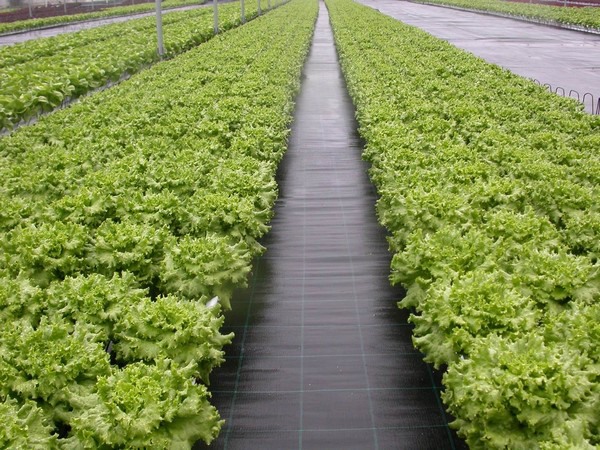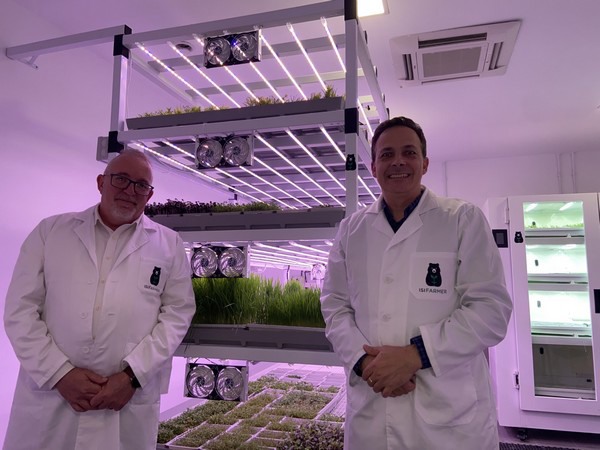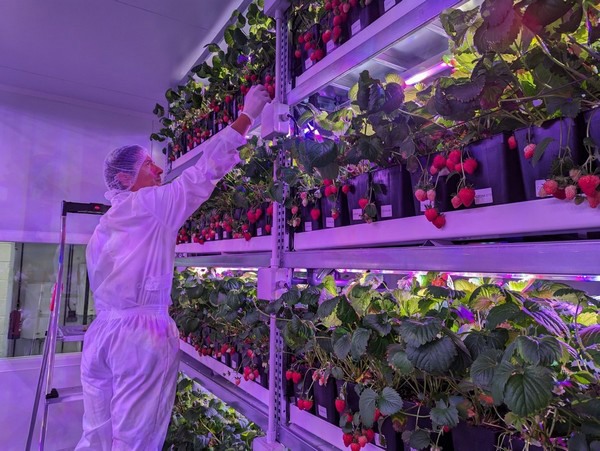Spain is one of the largest producers of lettuce in Europe. Favorable climate conditions have historically accommodated open-field cultivation for this crop, which can be grown quite consistently throughout the year. However, issues with soil degradation and water quality may put a strain on lettuce growers. Growers in North America, especially in California, are very much aware of that, with all the issues plaguing the Salinas Valley - the lettuce basket of the US. To keep the same level of production, many brought the cultivation indoors, such as a greenhouse, and resorted to hydroponics. That has proven beneficial not only from a cultivation standpoint but also from a market standpoint. With the increased consumer awareness of the origin of products and the way those are manufactured, the environmental benefits of hydroponics could also be monetized outside a mere opex perspective. The same argument, however, cannot be made for Spain. Yet, hydroponic lettuce cultivation is present in the country. So, what is happening?

Spain heavily relies on greenhouses and hydroponics, yet lettuce doesn't really seem to be the main crop. "We do know that Spain has a greenhouse area of around 75,000 hectares and that the percentage of vegetable crops is very high. The stars are usually tomatoes, peppers, and cucumbers. Lettuces, on the other hand, can be grown well in the open air, so many traditional farmers chose to avoid the initial investment in the greenhouse even if it costs them more in irrigation water and weather problems," said Javier Huete Lázaro, Business Development of J. Huete Greenhouses.
"Growers obtain important yields producing lettuce in open-field still, so many of them think that hydroponics and a greenhouse or tunnel is not necessary. We firmly believe that hydroponics and greenhouses can help to face climatic change and soil degradation. Firstly, because a greenhouse produces near cities, the carbon footprint is reduced. Secondly, because hydroponics doesn't use soil, obviously, greenhouses and hydroponics can work with less water irrigation, too. All of this makes us think that, in the future, both options (for producing lettuce, tomatoes, or fruits, and so on) can be increased in Spain and other parts of the world with high temperatures, droughts, and climatic problems. Yet, we don't see the future! So it's very difficult to say."
'Hydroponics not considered an added value'
"I think it's a consumer awareness issue," says Donald Gartland from NGS, a company specializing in hydroponics systems out of Spain. "If you look at consumers in Northern Europe, they are more aware of product seasonality and how those are produced. Everybody wants to hear that the veggie they are consuming has a very low carbon footprint and is produced locally with fair labor practices. Such a thing is not much present in Spain." In other words, Spanish consumers are not as aware as their Northern European counterparts about the story behind a product. "Unlike in California, for instance, in Spain, you wouldn't see 'hydroponic' on the traceability label of a product. That's because it's not really considered an added value at the moment," Donald points out.

But even if very few or any lettuce have the hydroponic label, does that mean that there's no hydroponic lettuce cultivation at all in Spain? "That's not true," Donald remarks. NGS has indeed worked on a few lettuce hydroponic projects, the most notable one being a hydroponic iceberg lettuce cultivation. "This system was installed in the open field, so it's not your usual hydroponic greenhouse lettuce project."
Climate conditions in Spain are indeed quite favorable for growing lettuce out in the open, so going for a greenhouse structure wouldn't make much sense. Despite that, even hydroponic lettuce growers wouldn't qualify their product as hydroponic for consumers. "Again, it's a matter of consumer awareness. As long as there's not some sort of push, from the government level, for instance, that highlights the environmental and production benefits of going hydroponic, then consumers would hardly realize the importance of such a mode of production."
In other words, in Spain, there's no distinction between an open-field lettuce market and a hydroponic lettuce market.
Within this context, enter vertical farms. Many of these operations have sprouted around the world, and of course, Spain is no less. Given the lack of consumer awareness and the prevalence of open-field farmers, could vertical farms play a significant role in the market of the future? The people at IsiFarmer, a platform that connects vertical farming producers with consumers, believe that the vertical farming industry is still very much in the infant stage in Spain.
"It's a stage where a lot of local and national producers do not still see the great benefit of these operations, and their reasoning is based on cost and profitability perspective right now. In Spain, there's still a lot of land, there's less water, but enough to make do. This, however until we reach the next big water shortage crisis, which will undoubtedly come soon. In that sense, a lot of consumers don't feel the direct need for vertical farming. The market is not mature. Growers producing at a large scale in Spain are not embracing this entirely. Rather, only in certain cases they are doing small examples, small R&D," says Marcos Enriques, founder of Isifarmer.

Thinking outside of the box with berries
That is why the vertical farm AloAlto has decided not to compete with outdoor lettuce growers but rather hit a completely different market segment. Strawberry, that is. "Unit economics are hard for leafy greens, you are competing with outdoor growers that sometimes produce at a fraction of the cost of a vertical farm. You put yourself in a tough position if you are not providing a product that is very different or outright unknown in the market. That's why we are growing a unique Japanese strawberry variety that has never before been cultivated in Europe," says Alejandro Casacuberta, co-founder of AloAlto. "In the end, the customer values price and quality. Unless one of them is much better than everything else, they will not go for it."

Prices have indeed gone up since COVID, especially lettuce, says Donald from NGS. "Growers too, have felt the increase in opex. Lettuce manufacturers usually own huge plots of land, and when they have issues, they move one and just stop using that part. However, right now, the regional government of Murcia has limited the plantation of lettuce in the Mar Menor area. This is a little lagoon in south-eastern Spain. Too many nitrates got into the water and contaminated it. So, they made a program to give subsidies to any grower who wanted to do open field hydroponic cultivation."
Surely, that might encourage some growers to go hydroponics. Antonio García, Export Manager of Hydroponic Systems, indeed believes that many growers will shift to hydroponic sooner or later. "There are still lots of growers cultivating lettuce on soil in the traditional way, who will move to hydroponics in the future."
